As an ecommerce entrepreneur, one of the biggest decisions you need to make is where you are going to sell your products. Of course, you can sell them on any and all platforms, but when first starting out it is likely a toss-up between Amazon FBA and your own Shopify store.
Both Amazon FBA and Shopify are incredible ecommerce platforms to sell your products on, but which one is better for you? While there are some similarities between the two, they offer different solutions for sellers and brands.
In this article, we’re going to explore:
- The similarities and differences between Amazon FBA and Shopify
- The pros and cons of each one
- What it costs to sell on Amazon and on Shopify
- Which platform is right for your business
What are the similarities and differences between Amazon FBA and Shopify?
While both are great for selling products and growing brands, each platform is actually very different from the other. Let’s explore the similarities and differences between the Amazon marketplace and Shopify.
Similarities
You don’t need a registered business to get started
Anyone can sign up to sell on Amazon or Shopify, even if you do not have a registered business. You can sign up using your personal information and get started on selling products. Note that you need to go through an approval process on Amazon as they require a government ID, a chargeable credit card, tax information and other documents before you can create your account.
Easy to list products for sale
There is a bit of a learning curve on each platform but overall, it is easy to list your products for sale once your accounts are set up. Each platform’s user interface tells you what product information is required to go live. You don’t need to know how to code to create a store on either platform!
Low set-up cost
Amazon has two different seller plans to choose from: Professional and Individual. If you choose the Individual plan, you can get started for free. Your account will be limited but you can get the hang of how Amazon works before committing to payments of $39.99/month for the pro account.
Shopify typically offers a 14-day free trial, and then you will have to pay $29.99/month for the basic selling plan.
Seller support
Both platforms offer seller support where you can ask questions as you begin your seller journey. On top of that, both platforms also feature lots of helpful content and resources that can answer many of your seller questions.
Differences
You have access to Amazon’s loyal customers
If you sell on Amazon, you essentially have a built-in customer base of over 150 million Prime members. These shoppers trust Amazon and are on the website to buy products they love and need. If you are selling popular products that customers are searching for, you can achieve organic sales without the use of advertising. (Though many sellers take advantage of Amazon PPC Advertising.)
On Shopify, you are responsible for driving traffic to your website — Shopify does not do that for you. You can have the best website and product in your niche but if customers don’t know that your brand exists, you obviously won’t get any sales. Driving qualified traffic and profitable sales to a website no customer has heard of can be challenging for a beginner seller.
Amazon is a marketplace, Shopify is an ecommerce platform
When listing products for sale on Amazon, you are competing with thousands of other third-party sellers, sometimes on the same product listing. Sellers compete with one another to gain the top spots in search results, vying for customer conversion.
Amazon sellers cannot really customize listings like one can on Shopify but if you’re enrolled in Brand Registry, sellers can create A+ Content and a customized Amazon Storefront.
On Shopify, you have your very own customized online storefront that is all about your products and brand. There will be no distractions from competing products or sponsored ads. You can build your store with free and paid themes along with many useful apps you can connect to your store.
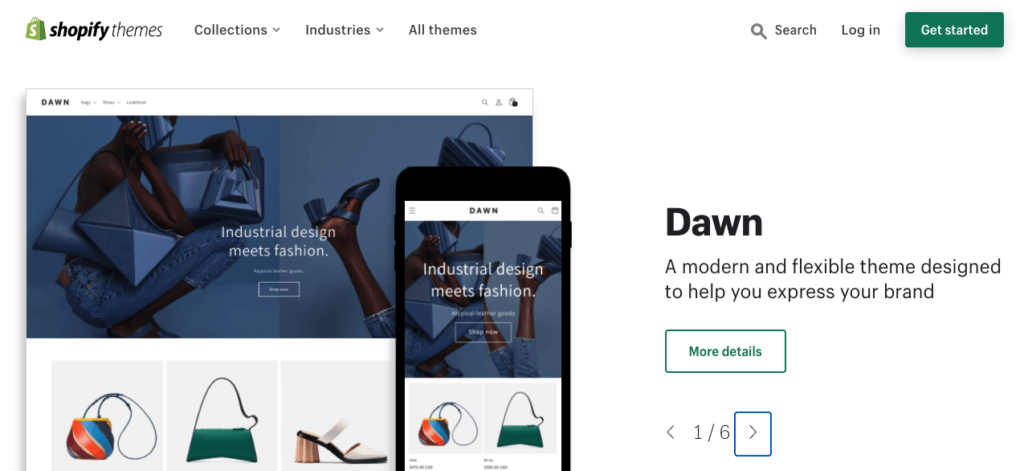
You’ll pay various fees selling on Amazon
The one downside of selling on Amazon: the numerous fees, which can account for nearly 30-40% of your sales revenue. When choosing a product to sell, be careful to accurately calculate the fees you will need to pay to Amazon. While they can add up, Amazon really does a lot for sellers, especially if you’re using FBA to fulfill orders.
On Shopify, the only fees you will need to pay are the monthly subscription cost, payment processing fee, and yearly domain name registration. All in all, it is much less than what you would pay in Amazon selling fees.
The pros and cons of selling on Amazon
Amazon’s significant base of loyal customers makes it an exceptional platform for beginner ecommerce sellers and large brands to sell products. With that being said, there are some drawbacks that sellers need to consider. Let’s go over the pros and cons of selling on Amazon.
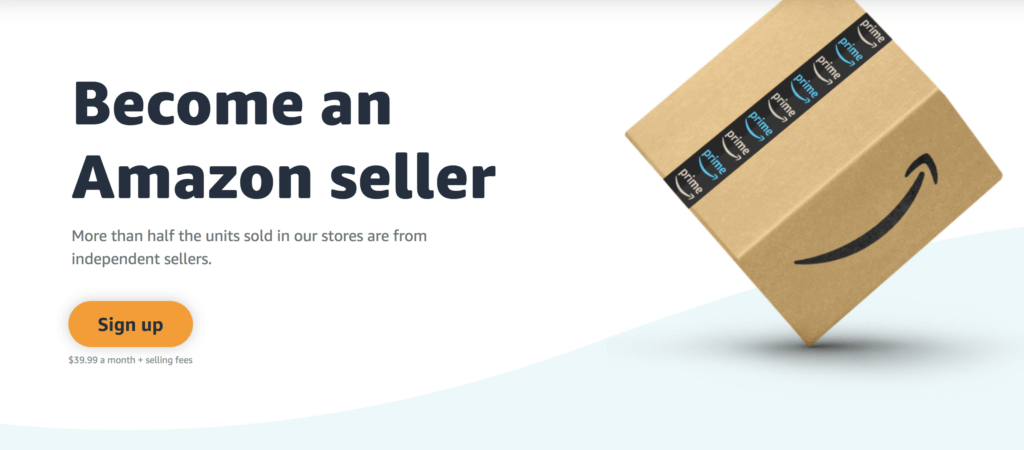
Pros
- Once your products are live, you have immediate access to a vast audience
- Amazon is built for sellers; you won’t need to build your own ecommerce store
- You can use Amazon’s advanced fulfillment network, Fulfillment by Amazon, to store inventory and fulfill your orders for you
- Amazon will handle FBA returns and customer service issues
- You have access to advanced advertising tools such as Sponsored Products ads, Sponsored Brands ads, Sponsored Display ads, and much more
- Amazon is constantly innovating to make the marketplace better for its sellers
- You can sign up for various international Amazon marketplaces to have access to more customers worldwide
- You can try various business models such as retail arbitrage, wholesale, dropshipping, and private label
- You can enroll your brand in Amazon’s Brand Registry to have access to more advanced selling tools such as A+ Content, storefronts, video ads, Amazon Attribution and Amazon Live
- Customers are much more likely to convert on Amazon than on other ecommerce stores
We can go on and on about the pros of selling on Amazon, but these are just some of its main selling points.
Cons
- It can be expensive, with fees ranging from 15% (if you don’t use FBA) up to 40%
- Competition continues to grow every year, challenging beginner sellers
- Aside from images and copy, you cannot customize your listing to stand out
- You must follow Amazon’s Terms of Service or risk suspension/permanent removal
- Amazon can change its rules at any time
- Amazon PPC is competitive and can eat up your entire profit margin if not done correctly
- If you have an issue, Seller Support isn’t always very helpful
- Some categories and products have become saturated and competition is tough
The pros and cons of selling on Shopify
Shopify is an incredible platform that helps to empower entrepreneurs and brands to build their very own ecommerce businesses. You get to create your own website and customize it however you want. While all this is valuable, there are some downsides that you need to be aware of before creating a store on Shopify.
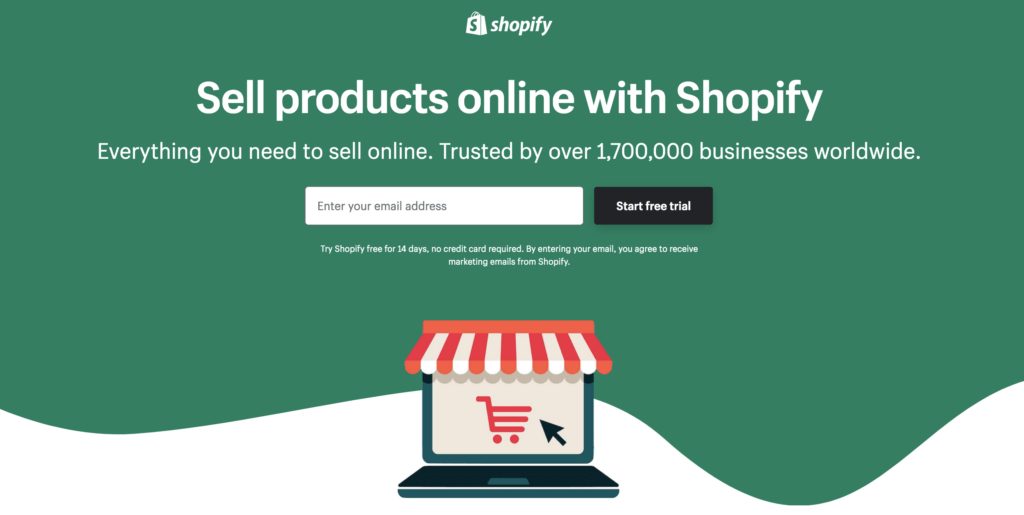
Pros
- A free 14-day trial allows you to explore how Shopify works and play around with its features
- You have full control over your dedicated and customizable ecommerce store
- Shopify provides you with free store themes to choose from
- Shopify’s Fulfillment Network can store and fulfill orders for you, similar to Amazon FBA
- There are no costly selling fees that eat into your profit margin
- The Shopify app store lets you download various plugins that add functionality to your store
- You can create a one-product store or sell as many products as you’d like
- You can build a mobile-friendly store so customers can easily make purchases on the go
Cons
- Shopify makes it easy to build a store but there’s a bit of a learning curve for first-timers
- Since it’s not a marketplace with built-in customers like Amazon, eBay, Facebook, or Walmart, you need to market and drive traffic yourself to your website through platforms such as Google ads, Facebook ads, and social media
- Most apps in the app store are not free
- Shopify offers only 9 free themes with simple functionality; advanced customization features are found in paid themes
As you can see, there are pros and cons to both Amazon and Shopify. Figure out what is important to you and decide which — if not both — is right for your business.
What does it cost to sell on each platform?
Now that we’ve gone over the pros and cons of both Amazon and Shopify, what does it cost to actually sell your products on each one? Both have their own fee structures that you will need to evaluate when choosing where to sell your product.
Amazon Fees
Referral fees
This fee is paid by all Amazon sellers, whether or not you use FBA. It is Amazon’s “commission” for selling on their platform.
Cost: It is typically 15% of each sale, depending on the category.
Selling plan fees
This will vary depending on the selling plan you choose. As mentioned above, Amazon has an Individual plan and a Professional plan.
Individual: This plan charges sellers an additional $0.99 for each transaction. This plan only makes sense if you sell less than 40 items per month.
Professional: $39.99/month. This plan gives you access to more selling features such as the Buy Box and PPC advertising.
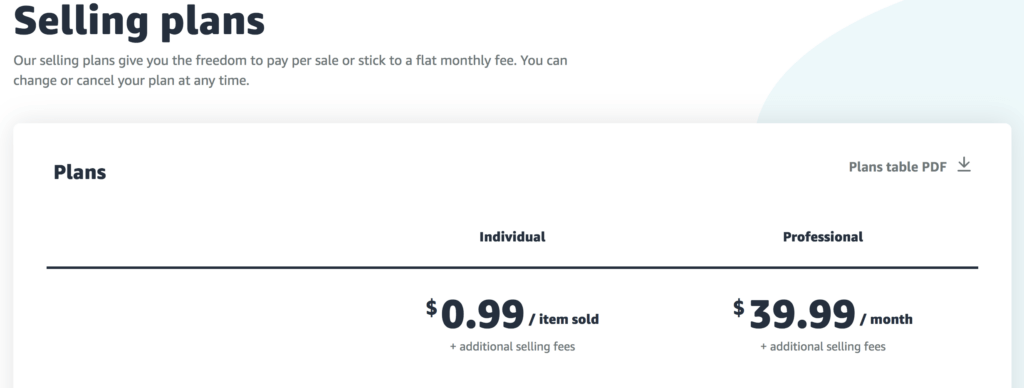
Refund administration fees
Amazon charges you a fee to process your FBA returns. The fee is either $5.00 or 20% of the refunded amount, whichever is less.
FBA fees
Amazon stores, picks, packs, and ships your items for you. To cover that cost, Amazon charges an FBA fee, which depends on the size and weight of the product shipped.
FBA storage fees
If you have inventory leftover in Amazon’s warehouses at the end of each month, you will be charged a storage fee, which depends on how much space is being used. If your inventory has been stored at a fulfillment center for over 180 days, Amazon charges you a long-term storage fee.
For a full breakdown of all of Amazon’s fees, please check out: Amazon FBA Fees: How They Work and How to Profit as a Seller.
Shopify Fees
Does Shopify cost money? Yes, let’s go over the selling plans. When signing up for Shopify, you’ll have three options to choose from: the Basic Shopify plan, the Shopify plan, and the Advanced Shopify plan.
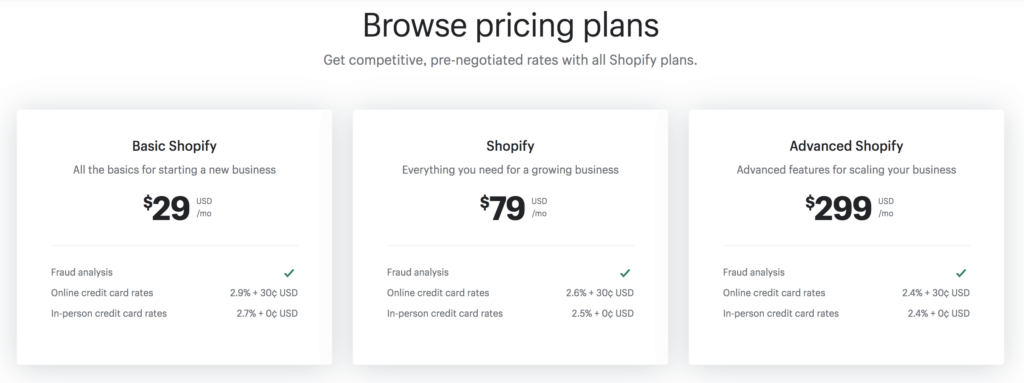
For most ecommerce businesses, the basic $29/month plan is perfect. As you grow your business, revisit the other plans and assess which ones could be more profitable or beneficial for you.
As you can see below each plan, you will also be charged a credit card processing fee per transaction. For the basic plan, that cost is 2.9% + $0.30.
Is Amazon or Shopify better for my business?
This depends on your type of business and your goals. Weigh the pros and cons listed above and figure out which solution will work best for your business.
If you are a reseller doing retail/online arbitrage or wholesale, Amazon will likely be the better option for you. This is because you can list your products on an already existing Amazon listing with a sales history. While you can do this on Shopify, it will be more difficult to make sales.
Shopify is a favorable option if you really want to grow your brand awareness with a fully customizable website. It is also a much better option for sellers who want to get into dropshipping.
Also, just because Amazon has millions of customers worldwide, that does not automatically mean you will be successful and make sales. Since there is a low barrier to entry to become a seller, the marketplace welcomes new sellers every day.
A lot of research needs to go into choosing the right products and creating effective advertising campaigns to grow your organic rank on Amazon.
In my opinion, Amazon is more beginner-friendly; you can sell and advertise directly to the built-in audience that is already visiting the website. Ultimately, it is really up to you to decide where you want to sell your products.
Can I sell my products on both Shopify and Amazon?
Yes, of course, you can! As you grow your business and brand, it is always best to diversify your sales channels. Amazon is great for making money and increasing brand awareness with a large audience; having a Shopify store helps to build your brand identity with the potential to scale your business on your own.
If you do sell on both platforms, you can sync your Shopify store with your FBA inventory. This means that Amazon can ship your Shopify orders for you, just like they do for your Amazon orders! This is a good option for brands that have lots of products and inventory that don’t have the capacity to store and ship online orders.
To learn more about how to integrate Amazon FBA with Shopify check out our in-depth How to Integrate Amazon FBA with Shopify guide.
Many businesses actually do use both Amazon and Shopify. Check out our recent Amazon Seller Success Story!
Where will you sell your products?
Choose Shopify if you want full control over your branding and choose Amazon if you’re looking for more of a “hands-off” approach to selling online. Here are some in-depth guides on how to sell on both Amazon and Shopify:
We hope this helps you to figure out the similarities and differences between selling on Amazon and selling on Shopify, and brings you steps closer to deciding where to sell your products. They’re both excellent options! If you have any questions about Amazon FBA or Shopify, leave a comment below!
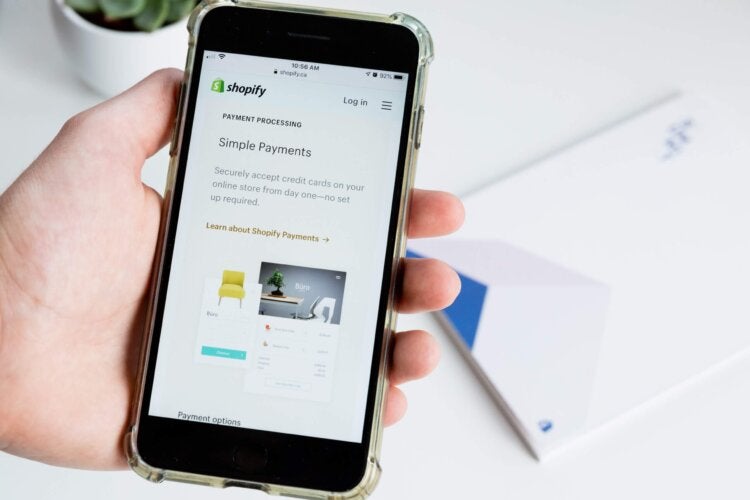
 No Comments
No Comments